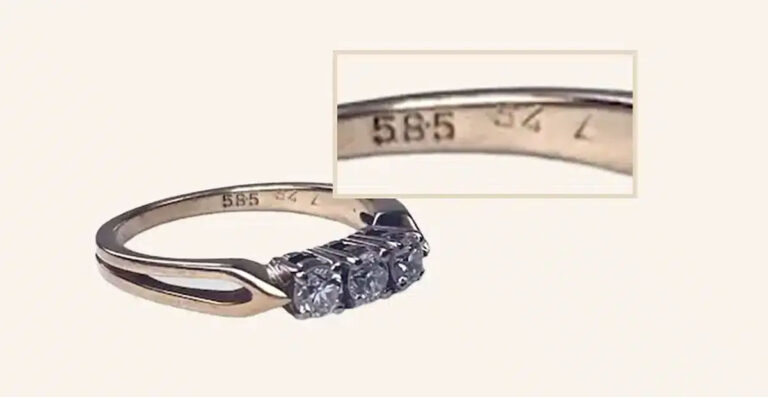Follow Hunt Vintage

How to identify Silver Marks
Investing in silver, whether by buying or holding onto it, can be a highly strategic financial decision. When acquiring rare or antique silver pieces, understanding the significance of hallmarks is crucial. These marks authenticate the item’s age and provenance, helping to safeguard your investment. In this guide, we’ll take you through the process of identifying and interpreting silver hallmarks—those small stamped symbols found on the back or underside of silver items—and explain what they reveal about the piece.
What are silver hallmarks?
Silver hallmarks are more than just decorative marks; they provide essential information about the piece. These markings indicate the purity of the silver, identify the maker, and often offer clues about when the item was crafted. A complete set of silver hallmarks typically includes four key elements:
Let’s delve deeper into what each of these marks reveals to us…
The date letter
The date letter hallmark on silver is a key indicator of the year the piece was officially hallmarked. You can find a complete list of date letters here.
To illustrate, we’ve provided an example below featuring the date letter for Birmingham in 1774.

The town mark
The town mark serves to identify the location where the item was crafted, with each area represented by its own distinctive symbol. You can view a complete list of town marks here.
For example, the town mark for Glasgow features a unique combination of symbols: a tree, a fish, and a bell, as illustrated below.

The maker’s mark
By now you’ll know where the item was from and the date it was hallmarked. Next, you’ll want to identify the maker. This will let you know which company or person actually created the piece. Again to correctly identify the maker we would recommend using this tool.
Below we’ve used an example of a silver piece that was created in 1828, Chester by the maker John Coakley.

The lion passant
We’ve kept, arguably, the most important hallmark to last. This is known as the lion passant. This mark is of extreme importance as it essentially confirms if the piece you have or are considering for purchase is genuine silver. If it does not have the lion passant, unfortunately, it’s unlikely to be silver. It may instead just be silver plated.
If the piece originated in Scotland however, then you can expect the mark to be of a ‘thistle’ as opposed to a lion.
The lion can appear in two forms; the lion passant or the lion passant guardant. The hallmark on earlier silver items will have the lion looking towards you; this is therefore known as the lion passant guardant.

When did silver hallmarks first appear?
Now that you understand what each of the marks represents, you might be wondering when silver hallmarks first originated. The answer takes us back to 1300, with the introduction of the ‘Leopard’s Head’ hallmark. This marked the beginning of a standardised system, with the first guild established to ensure all silver was tested and appropriately marked at designated guild halls.
‘no goldsmith… shall from henceforth make or cause to be made any manner of vessel, jewel or any other thing of gold or silver except it be of the true alloy […] and that no manner of vessel of silver depart out of the hands of the workers, until further, that it be marked with the leopard’s head’.
Statute of Edward I in 1300 (28 Edw. I c.20)
Hallmark sequences
Provided via the British Hallmarking Council (and recently reproduced), you can view a list of historical hallmarks from the London, Birmingham, Edinburgh and Sheffield offices below.
London Hallmarks

Birmingham Hallmarks

Edinburgh Hallmarks

Sheffield Hallmarks

If you’re on the hunt for authentic silver pieces or vintage furniture then take a browse through our website for our latest finds. Hunt Vintage® works with an extensive network of silver, vintage and antique dealers to help you unearth the rarest pieces effortlessly from anywhere in the world.


